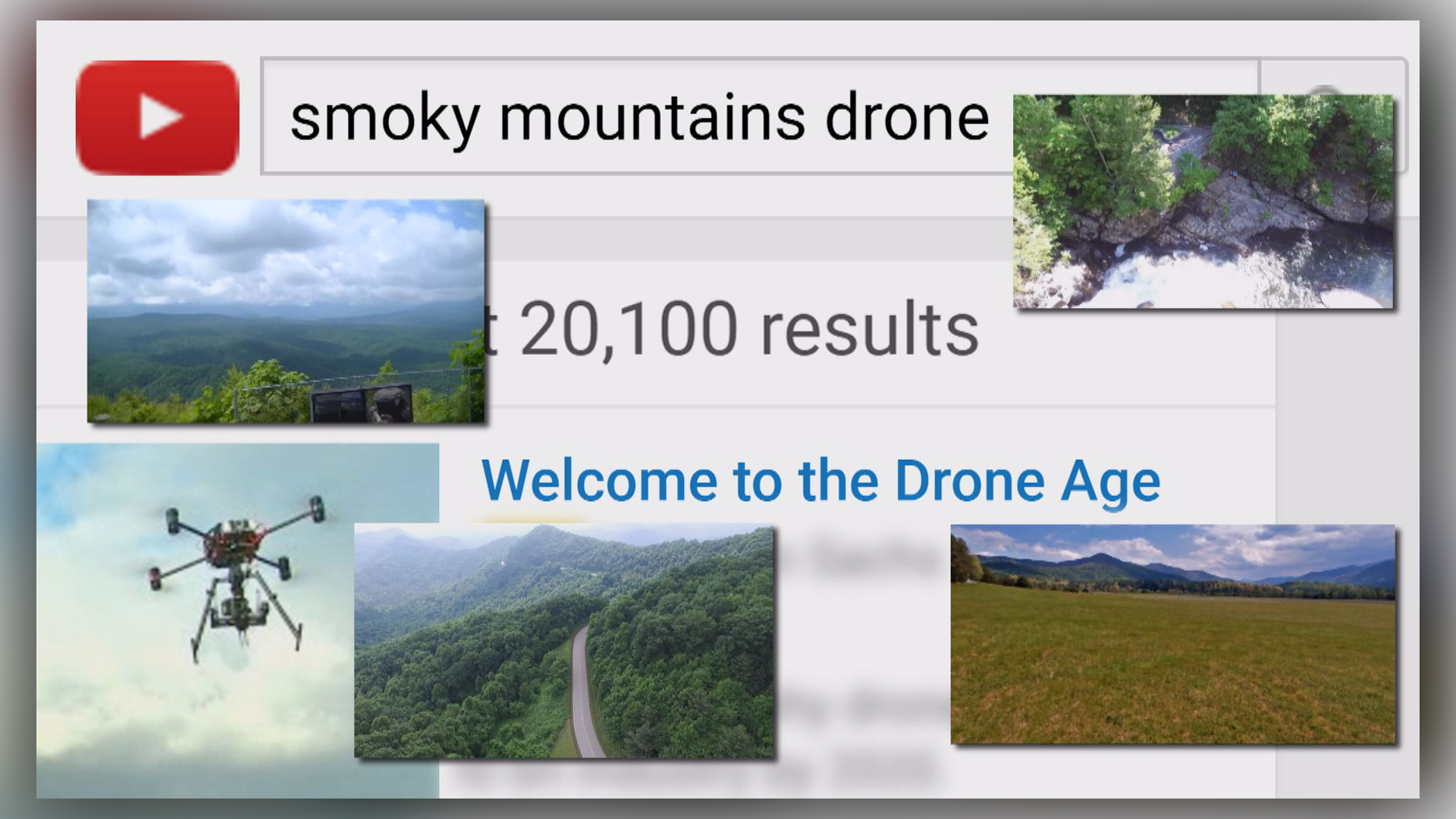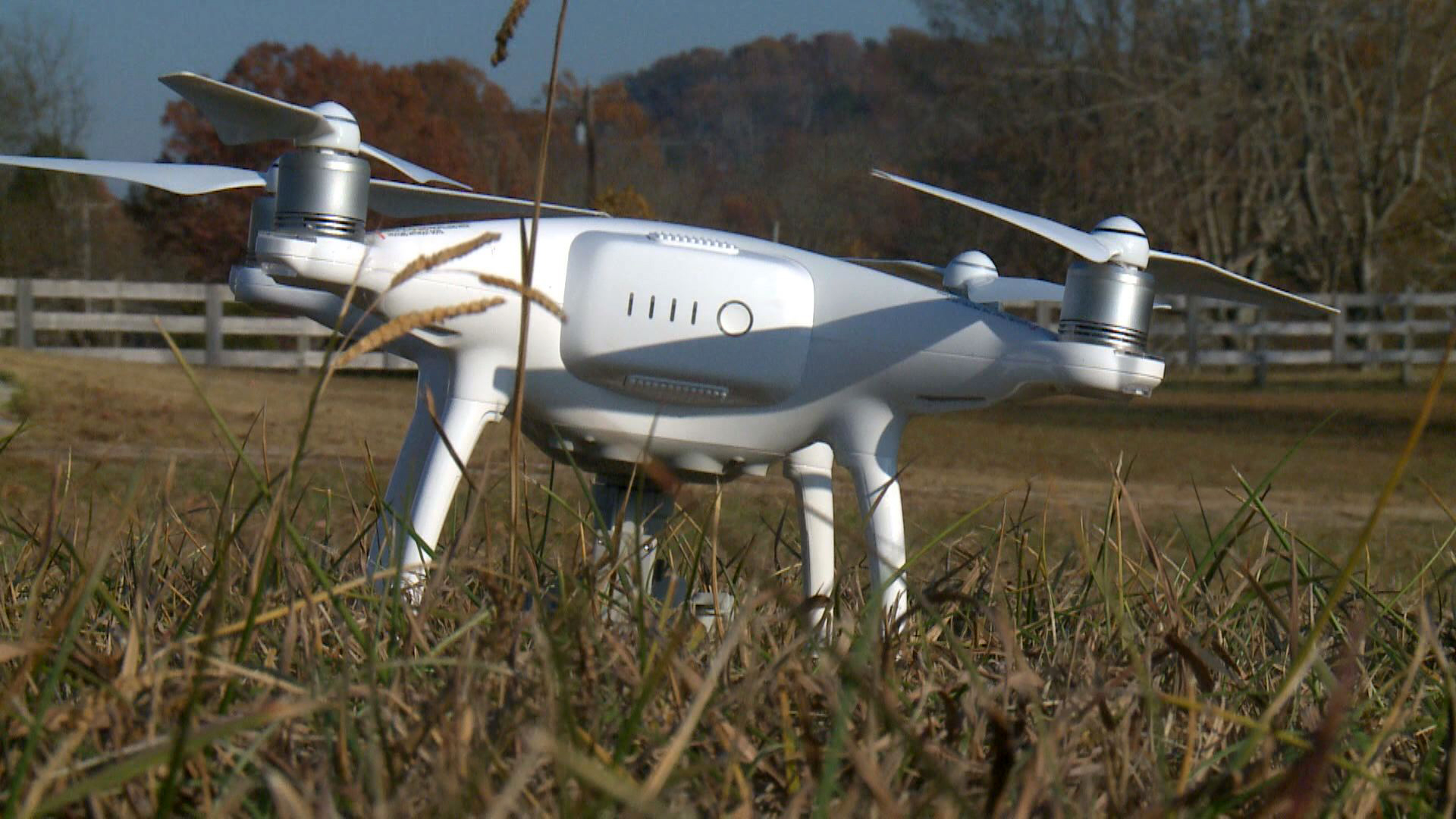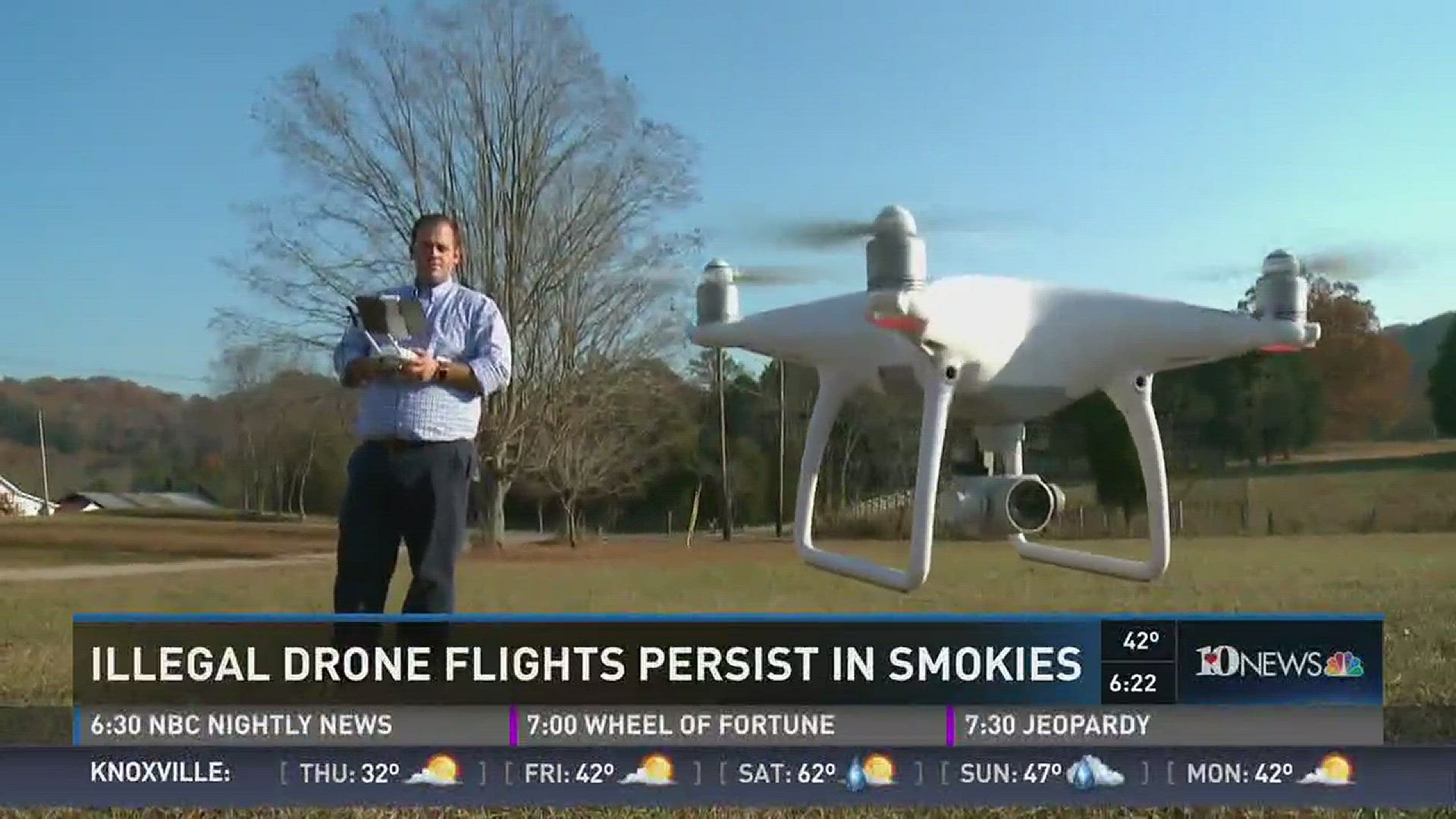If a drone is on your wish list, join the crowd. Around half a million of the unmanned aircraft systems were registered with the FAA since December 2015 in the United States. Another inevitable surge in drone ownership is set to take off during the holidays this year.
If you're ready to shoot some spectacular scenery with your drone, be sure not to do it in the Great Smoky Mountains or any other property operated by the National Park Service. All 84 million acres of NPS land, national monuments and scenic rivers are off limits to drones.
"It infringes on our visitors' privacy and it can also disrupt our wildlife," said Jamie Sanders, GSMNP spokesperson.

The NPS ban on drones has been in effect since June 2014. Even with more than two years of educating visitors and issuing fines to violators throughout the nation, the illegal flights remain a persistent problem.
"I would say it's every week to two weeks, rangers are contacting visitors for these incidents with drones here in the Great Smoky Mountains," said Sanders. "Some people just don't know [drones are banned]. Of course, some know exactly what the rules and regulations are. Often times, they've left the scene by the time rangers arrive when someone calls us."
A YouTube search for drone videos in the Smokies yields hundreds of clips shot during illegal flights in areas throughout the park. Clingmans Dome, the highest point in the Great Smoky Mountains, is one of the "hot spots" for drone use, according to Sanders.
Other popular locations for illegal flights include Cades Cove, Chimney Tops, and Newfound Gap.

Many drones now feature GPS systems with a safety feature called geo-fencing. The geo-fence acts as a perimeter to prevent drones from operating in no-fly zones such as airports, national parks and wildfires.
"I fly for fun, mostly at my farm," said drone owner Jacob Haskew. "But one time I took the drone to the botanical garden in Knoxville and did not know it was a no-fly zone. With the GPS software on my drone, when I tried to power it on, my drone was just basically a paperweight. It's a pretty smart piece of technology to let you know where not to fly."
Some drones do not automatically recognize no-fly zones or allow the function to be manually disabled.

Flying a drone in a national park can cost you. Rangers can write tickets for a misdemeanor violation that is typically accompanied by a $75 fine. However, the penalties can go much higher to include a mandatory court appearance. A judge then has the authority to issue a $5,000 fine and/or 6 months in jail for the violation.
"Over the last two years, there have been a few citations issued [in the Great Smoky Mountains]," said Sanders. "However, we want to focus our efforts on prevention and education."
The bottom line is the NPS says it wants people to safely enjoy their drones. Just enjoy them somewhere other than the National Parks.

"Most of our visitors come here seeking serenity and the wilderness environment. We feel the use of unmanned aircraft such as drones takes away from that visitor experience," said Sanders.
Several new laws for drones went into effect in August 2016. Drone owners are required to pass a test to obtain a license to fly if the aircraft is for commercial use. No license is required to fly for fun or recreation, but the drones must still be registered with the FAA. See a list of links below for a list of dos and don'ts for operating drones.
Safety requirements and guidelines issued by the FAA for recreational pilots include:
- Fly at or below 400 feet
- Keep your UAS within sight
- Never fly near other aircraft, especially near airports
- Never fly over groups of people
- Never fly over stadiums or sports events
- Never fly near emergency response efforts such as fires
- Never fly under the influence
- Be aware of airspace requirements

